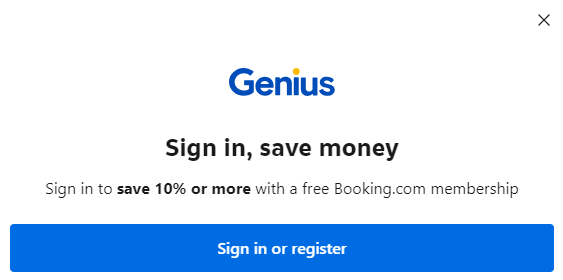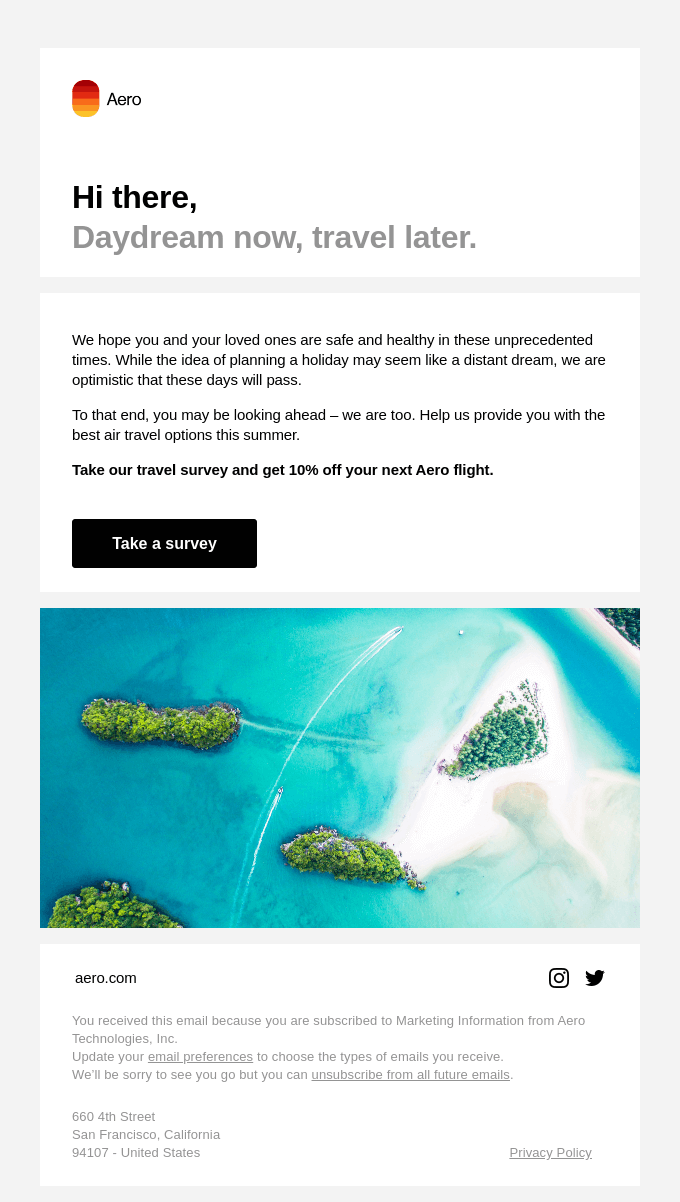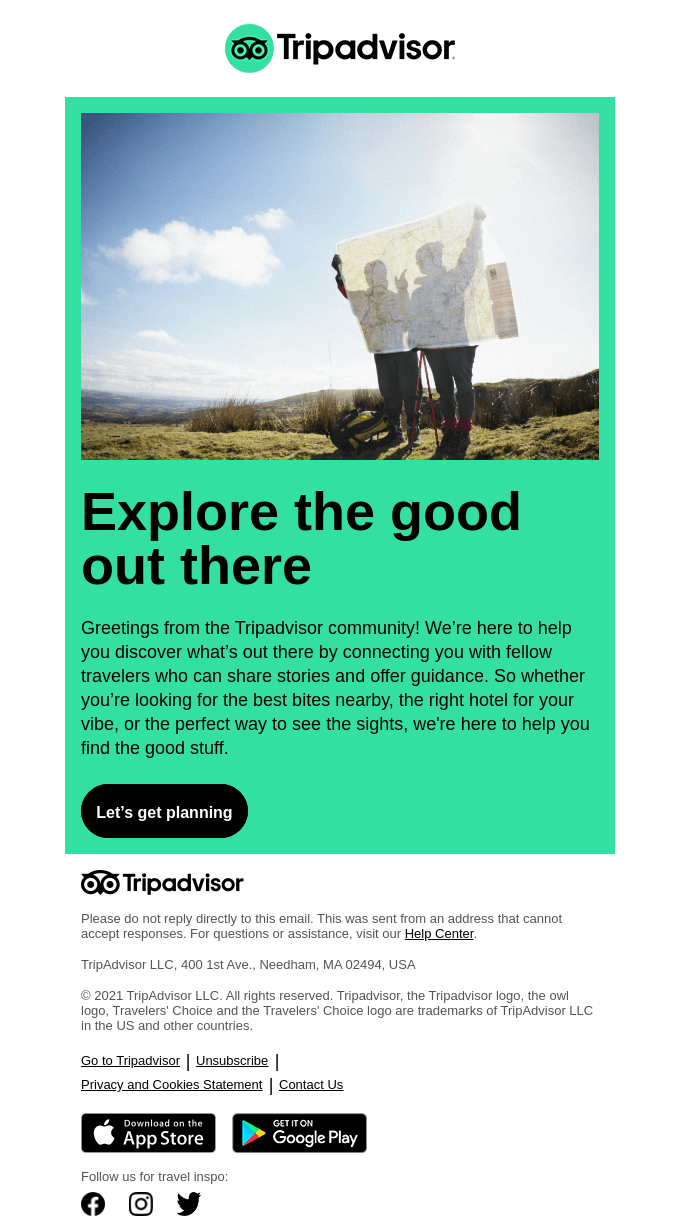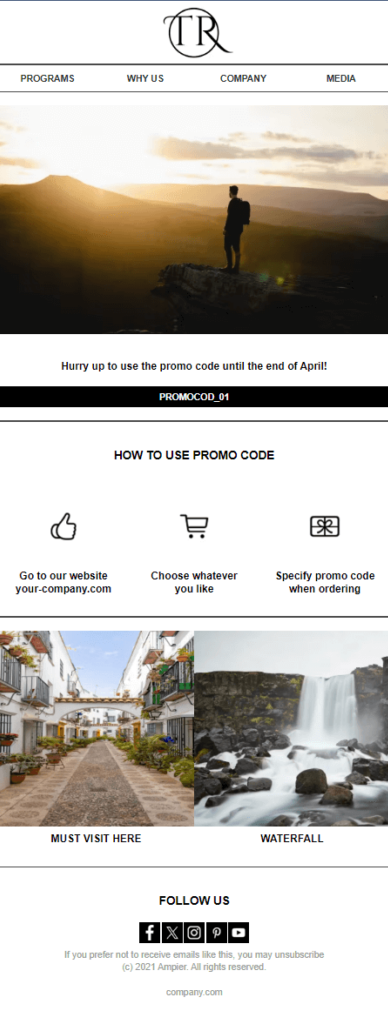When was the last time you visited a travel agency or booked a hotel room via phone? Those days seem far gone since nowadays most travelers do their research and make their reservations online. During the summer season, the competition in the travel industry becomes fierce. To stand out in the digital noise, you need to grab your audience’s attention. That’s where travel industry email marketing comes into play. Statistics show that email is still one of the most effective ways to connect with different audiences
In this guide, we’ll go through every step of creating a solid email marketing strategy for your travel business and convert subscribers into recurring customers. But first, let’s start with the benefits of leveraging travel email marketing.
Benefits of Travel Industry Email Marketing
Email marketing is a perfect fit for travel businesses to stay on top of their game – here’s how:
- Increase bookings with personalized travel recommendations.
- Enhance customer experience with automated booking confirmations and updates.
- Promote exclusive travel deals and discounts for subscribers.
- Boost customer retention through loyalty programs.
- Communicate travel advisories and emergency notifications quickly.
- Send timely travel reminders and preparation checklists.
- Upsell-related services such as car rentals, local tours, or travel insurance.
- Increase engagement with seasonal travel promotions and special offers.
5 Steps to Building a Stellar Travel Industry Email Marketing Strategy
A memorable experience isn’t limited to a pleasant stay, tour, or trip. Your email marketing is also part of this process. That’s why we gathered all the essential steps to take for an outstanding travel email marketing strategy.
1. Choose the Right Email Marketing Tool
Email marketing is a powerful channel if you invest in the right tool to target and nurture subscribers. The ideal software should come with a wide set of features, acting as your control center to build lasting connections.
But with so many options out there, the decision gets overwhelming. So, what are the must-haves when you look for the right email marketing tool?
First come your travel business’s needs. It’s only natural to look for a solution that scales as your business grows. If you own a well-established tourism company, it’s highly likely that you have a large list of recipients and advanced needs. A new travel agency starting with a few contacts, on the other hand, won’t use sophisticated features.
Speaking of features, look for a solution that helps you target the right audience and create converting emails with minimum effort. Keep an eye out for features like:
- Segmentation
- Automation
- Pre-made travel-related templates
- Custom reporting
During your research, check that your preferred tool offers reliable and responsive customer service. You’ll need 24/7 support, and different options to reach your email marketing service, depending on your business needs. These may include email, phone, and live chat.
There are several email marketing solutions in the market. What you choose depends on your specific requirements. Let’s take Mailchimp for example. While the platform offers advanced and easy-to-use features, some of them may not be accessible for free or low-tier plans, such as automated journeys and reporting tools. If you want to send only seasonal campaigns, you may end up paying for features that you don’t use. In this case, you should explore a more affordable yet reliable Mailchimp alternative, offering flexible solutions based on your needs.
2. Build and Grow your Email List
Once you have your tool of choice, you’ll need a contact database. You may already have some email addresses from past bookings, but there are numerous opportunities to grow your audience. Now it’s time to reach out to new prospective travelers. Let’s see how.
Popups
Popups work great for your website, catching visitors’ attention instantly. But use them with caution since overwhelming users once they land on your website could turn them away. Combine them with a strong incentive like a discount to increase sign-ups, just like Booking does on their website:

Embedded forms
Embedded forms are a discreet option to get visitors to sign up for your emails. For instance, you could use a floating bar and add them at the top or bottom of your page.
Landing pages
Building compelling landing pages is an excellent way to collect your visitors’ email addresses. To ensure subscriptions, use a clear design and CTA for users to know the benefits of signing up. You could add a lead magnet, too, such as downloadable guides with traveling tips.
Contests or giveaways
Host social media contests or giveaways where visitors must enter their email address to participate. Select prizes that align with your business, for instance a tour operator could offer a free guided tour. You can use your email marketing to announce winners and engage your newly added contacts.
Whatever you choose, it’s important to share the benefits of joining your list. Increase the likelihood of conversions by motivating visitors to join your list. You can use incentives like receiving exclusive travel information, one-time discounts, or some type of freebie.
3. Segment your Contacts for Personalized Communication
The first step to successful travel industry email marketing is having a deep understanding of your audience through effective segmentation. Characteristics like their demographics, age, geolocation, interests, and travel history will help you create laser-focused emails that your subscribers open and click through.
One way is to leverage your sign-up process to make your segmentation as granular as it gets. For example, you could ask subscribers to fill in details like:
- Favorite travel destinations or transportation providers
- Types of travel interests (e.g., adventure, cultural, business)
- Average travel budget and preferred payment methods
- Dietary restrictions or preferences
- Email preferences, mostly on the frequency and content types (e.g. deals, travel tips, or destination guides)
- Accessibility requirements
Such a thoughtful approach allows you to build detailed customer personas and create tailored email content. This doesn’t mean you should go ahead and include too many form fields. You should keep them to a bare minimum to avoid disrupting the registration process.
There’s the option of using information from third-party apps like your CRM system. But you could also collect essential data down the line with dedicated email surveys and polls. It’s a win-win situation, too. You’ll gather valuable insights, and your customers will appreciate the interactive experience—and the fact that you value their opinions.
Here’s an effective email example by Aero, asking users to take a survey and help the brand offer the best travel options for their summer vacations. The airline company takes it all the way by including a 10% discount on their next flight in exchange for completing the survey.

With these tactics, you will be able to transform the data collected into targeted emails so that every subscriber gets the most value out of your communications. You wouldn’t suggest a luxurious hotel in the Caribbean to low-income individuals or the same destination to a traveler who’s already been there.
For example, a local travel business could segment recipients based on different types of local attractions and have a segment with customers interested in nature trails. Sending an email to this group to highlight the best hiking spots in the area is an example of laser-focused email marketing. A restaurant launching vegan meals could use an email campaign to showcase the new dishes or share recipes for popular vegan meals. By targeting segments with similar dietary choices, they increase the chances of conversions.
4. Use the most Effective Travel Industry Emails
There are different email campaigns for travel businesses to target their audience, depending on their specific goals. Here are the most effective travel industry emails.
Welcome emails
When a traveler joins your list, it’s time to send them a welcome email to initiate not just your relationship but also their travel experience. So, make this first impression matter by including a warm greeting and informing them of what’s to come. You could use your welcome emails for effective segmentation by asking readers about their preferences. This is also a great chance to convert them through a special deal or first-time discount.
Tripadvisor’s email introduces the recipient to the community, creating a sense of belonging. The email content emphasizes the value of connecting with fellow travelers while encouraging readers to start planning their trips through a powerful CTA.

Educational newsletters
Your subscribers signed up for a reason, and that’s not always to move to an immediate purchase. So, what else is in it for them? They could be looking for informative and educational content to decide which destination, cultural event, or tourist attraction to visit.
Use your newsletter to help them discover lesser-known locations or hidden attractions, offer exclusive insights, and let local people and experts share their stories. You could also break down myths regarding the local culture, an adventurous experience, dietary preferences, and more, always depending on your business type.
Abandoned cart emails
More often than not, you’ll see users abandoning their cart or reservation form. It may be that they changed their mind, or they just got distracted by something else. With more than 40% of abandoned cart emails getting opened, you have the opportunity to get them to seal the deal.
Use inspiring email copy to remind them why your unique value proposition is the best choice for their experience. Also, you could add compelling graphics to help them visualize the benefits of completing the checkout process.
Seasonal sales
Seasonal sales can prove to be a powerful strategy for travel industry email marketing. Many popular brands leverage specific holidays or times of the year to offer subscribers memorable experiences. Valentine’s Day is an occasion when couples seek romantic getaways, so you could promote couple retreats, spa treatments, or elegant restaurants. Of course, there’s summer, the best time to promote beach getaways, family resorts, and outdoor adventure trips. You could also highlight summer-specific activities like snorkeling or attending concerts.
Seasonal sales emails are also a great opportunity to give subscribers incentives like limited-time promo codes and encourage them to act immediately. Just as in the following summer promo email template by Moosend:

Customer loyalty deals
Rewarding your loyal customers is a bulletproof way to drive repeat business. Use segment characteristics like their traveling habits or favorite destinations to offer suggestions and deals that will make them act on your message.
You can send email updates about their points, celebrate certain milestones, and offer bonus loyalty points on their birthday. One of the most common examples is frequent flier programs provided by airlines to incentivize repeat travel with rewards and exclusive benefits.
5. Invest in Captivating Email Content
Besides personalization, captivating email content goes a long way. Well-crafted emails inspire wanderlust and convert a traveler’s interest into action. Here are some actionable tips to create email content that drives bookings and reservations.
- Write great email copy. Your copy is a decisive factor that could make or break your travel emails. Make it straightforward and to the point to keep readers focused on your key points. Use a natural voice and add a human touch so recipients feel your emails come from a real person they can connect with. Adding industry jargon is a recipe for disaster since readers won’t spend time on messages they don’t understand.
- Tell a story. People love hearing stories. This is even more true for travelers who want to know everything about their dream destinations, activities, or points of interest. Start your emails with a strong hook, build up with exciting details, and direct users to a compelling and action-oriented CTA. You could also share the stories of happy clients that made their dream holidays come true with your brand. Other travelers’ testimonials add authenticity to your content and influence your audience’s decisions.
- Add eye-catching visuals. The easiest way to get your recipients into a travel mood is to use stunning visuals. High-quality images or short videos* showcase destinations and experiences vividly while virtual tours can immerse prospective travelers in another world. If you have useful travel tips, itineraries, or interesting facts, consider showing them in the form of infographics instead of long-form text.
* When it comes to videos, there are still a few obstacles to consider when it comes to email marketing. You can read more about this in the dedicated chapters in our HTML emails article here.
- Create effective subject lines. To get your subscribers to open your emails, you need specific and clear subject lines that indicate what the email is about, such as “Top 10 Beach Destinations for 2024”. Incorporate curiosity by using intriguing language that urges readers to open your emails. If you have deals that expire soon, create urgency to boost immediate bookings. Scarcity elements in your subject lines work also in case you want to highlight limited availability.

Travel Industry Email Marketing: Take your Subscribers on a Journey
The travel industry is an ever evolving and competitive industry. To take your customers on the journey that leads to a booking or purchase, you need to invest in a robust email marketing strategy. Carefully planned and executed emails aren’t just about promoting your products or services. They offer you the opportunity to create captivating narratives that keep your brand top of mind for travelers.
Our guide has provided you with all the insights to forge genuine connections with your audience and build a loyal customer base that can’t wait to receive your emails. All you need to do is get creative, adapt to changing customer needs and behaviors, and monitor your email performance to give travelers the best experience possible.
About the Author

